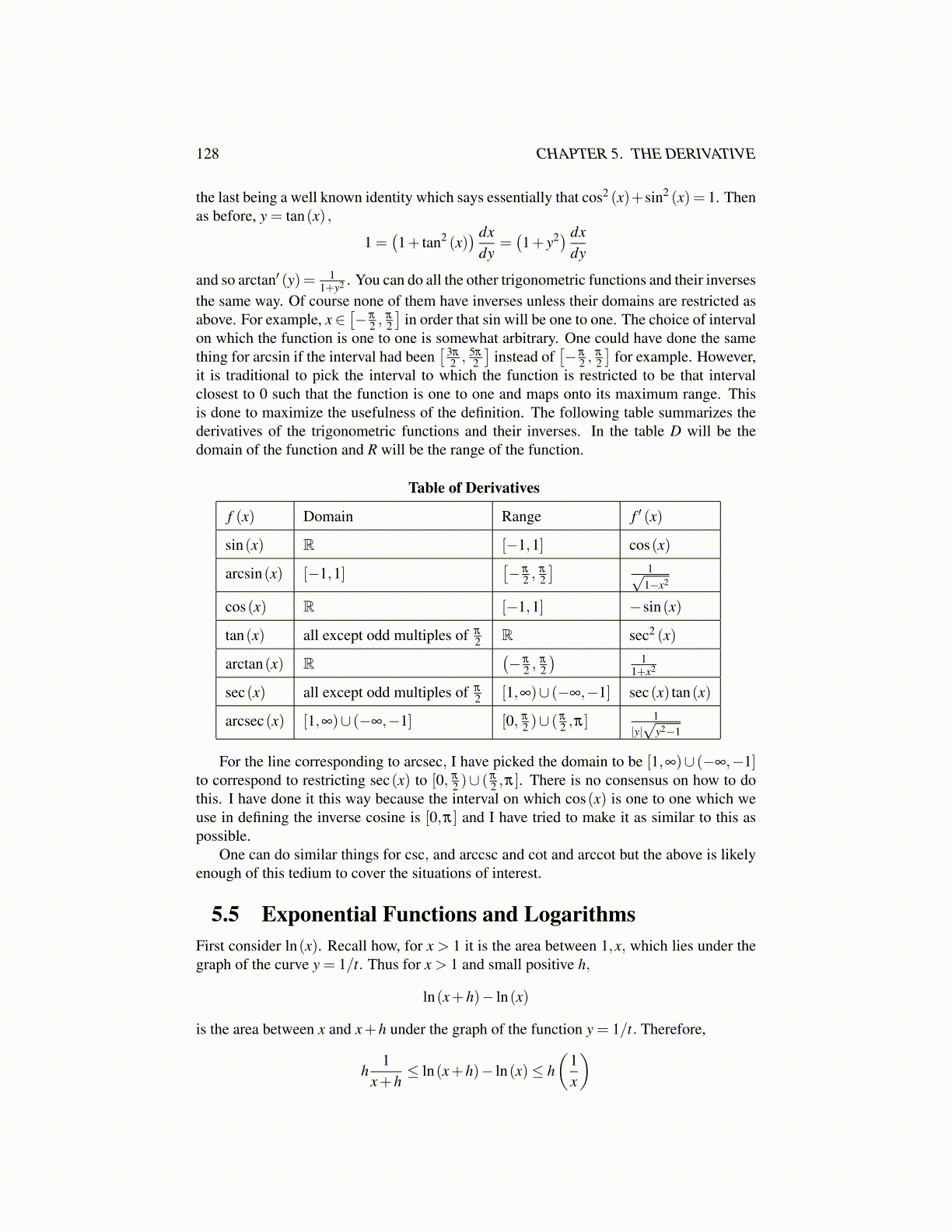
128 CHAPTER 5. THE DERIVATIVE
the last being a well known identity which says essentially that cos2 (x)+sin2 (x) = 1. Thenas before, y = tan(x) ,
1 =(1+ tan2 (x)
) dxdy
=(1+ y2) dx
dy
and so arctan′ (y)= 11+y2 . You can do all the other trigonometric functions and their inverses
the same way. Of course none of them have inverses unless their domains are restricted asabove. For example, x ∈
[−π
2 ,π
2
]in order that sin will be one to one. The choice of interval
on which the function is one to one is somewhat arbitrary. One could have done the samething for arcsin if the interval had been
[ 3π
2 , 5π
2
]instead of
[−π
2 ,π
2
]for example. However,
it is traditional to pick the interval to which the function is restricted to be that intervalclosest to 0 such that the function is one to one and maps onto its maximum range. Thisis done to maximize the usefulness of the definition. The following table summarizes thederivatives of the trigonometric functions and their inverses. In the table D will be thedomain of the function and R will be the range of the function.
Table of Derivatives
f (x) Domain Range f ′ (x)
sin(x) R [−1,1] cos(x)
arcsin(x) [−1,1][−π
2 ,π
2
] 1√1−x2
cos(x) R [−1,1] −sin(x)
tan(x) all except odd multiples of π
2 R sec2 (x)
arctan(x) R(−π
2 ,π
2
) 11+x2
sec(x) all except odd multiples of π
2 [1,∞)∪ (−∞,−1] sec(x) tan(x)
arcsec(x) [1,∞)∪ (−∞,−1] [0, π
2 )∪ (π
2 ,π]1
|y|√
y2−1
For the line corresponding to arcsec, I have picked the domain to be [1,∞)∪ (−∞,−1]to correspond to restricting sec(x) to [0, π
2 )∪ (π
2 ,π]. There is no consensus on how to dothis. I have done it this way because the interval on which cos(x) is one to one which weuse in defining the inverse cosine is [0,π] and I have tried to make it as similar to this aspossible.
One can do similar things for csc, and arccsc and cot and arccot but the above is likelyenough of this tedium to cover the situations of interest.
5.5 Exponential Functions and LogarithmsFirst consider ln(x). Recall how, for x > 1 it is the area between 1,x, which lies under thegraph of the curve y = 1/t. Thus for x > 1 and small positive h,
ln(x+h)− ln(x)
is the area between x and x+h under the graph of the function y = 1/t. Therefore,
h1
x+h≤ ln(x+h)− ln(x)≤ h
(1x
)